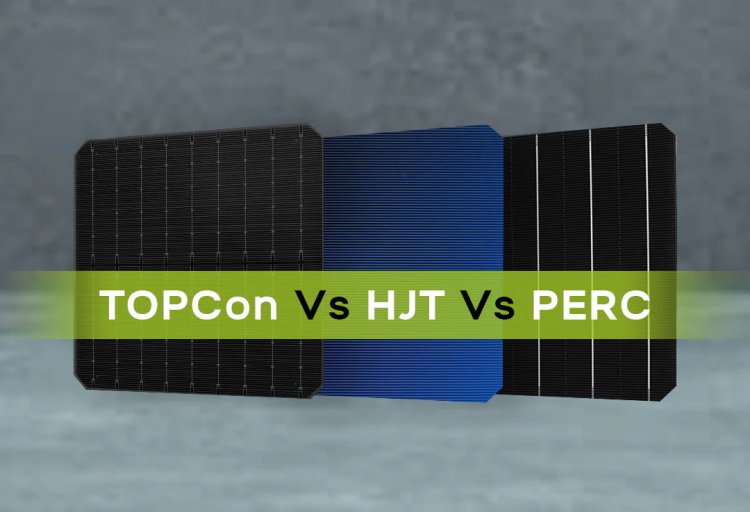Exploring Advanced Solar Technologies: PERC, HJT, and TOPCON
In this article, we delve into the intricacies of these technologies and their implications for the solar energy landscape.
Share this Post to earn Money ( Upto ₹100 per 1000 Views )

As the world increasingly turns to renewable energy sources, solar power stands out as a beacon of sustainable electricity generation. Amidst this growing demand for solar energy, innovations in solar module technologies have become paramount. Among the notable advancements are PERC, HJT, and TOPCON technologies, each offering unique advantages and contributing to the efficiency and performance of solar modules. In this article, we delve into the intricacies of these technologies and their implications for the solar energy landscape.
PERC (Passivated Emitter Rear Cell) technology represents a significant advancement in solar cell efficiency. By introducing a passivation layer at the back of the cell, PERC mitigates electron-hole recombination, thereby enhancing overall efficiency. Notably, PERC technology boasts compatibility with existing manufacturing processes and relatively low production costs, rendering it a ubiquitous feature in today's solar modules.
In contrast, HJT (Heterojunction Technology) introduces a novel approach by combining layers of amorphous silicon with crystalline silicon. This fusion facilitates superior electron-hole separation and reduces energy loss, particularly advantageous in high-temperature conditions. Despite its promising efficiency gains, HJT technology remains in the early stages of commercialization, limiting its prevalence in the market.
Topcon (Tunnel Oxide Passivated Contact) emerges as a hybrid technology amalgamating the strengths of both PERC and HJT. By employing a thin tunnel oxide layer akin to PERC for passivation and integrating heterojunction technology, TOPCON modules achieve heightened efficiency and improved performance, particularly under low-light conditions. However, its commercial applications are still nascent, primarily confined to the realm of research and development.
When evaluating these technologies, considerations extend beyond efficiency to encompass cost and availability. PERC technology strikes a balance between efficiency and cost-effectiveness, garnering widespread adoption among solar panel manufacturers. Conversely, while HJT offers superior efficiency, its higher production costs and limited market presence pose challenges to widespread adoption. TOPCON technology, while promising, is poised for further refinement before attaining commercial maturity.
In summary, PERC, HJT, and TOPCON represent pioneering advancements in solar module technologies, each offering distinct benefits and applications. PERC stands as the current industry standard, valued for its cost effectiveness and seamless integration into existing manufacturing processes. HJT exhibits superior efficiency yet grapples with cost barriers and limited market penetration. Meanwhile, TOPCON holds immense potential with its hybrid approach but remains in the developmental stage.
As the solar energy landscape continues to evolve, understanding these technological advancements is imperative for consumers and industry stakeholders alike. By staying abreast of emerging innovations, stakeholders can make informed decisions to harness the full potential of solar energy, paving the way for a sustainable and renewable future.










